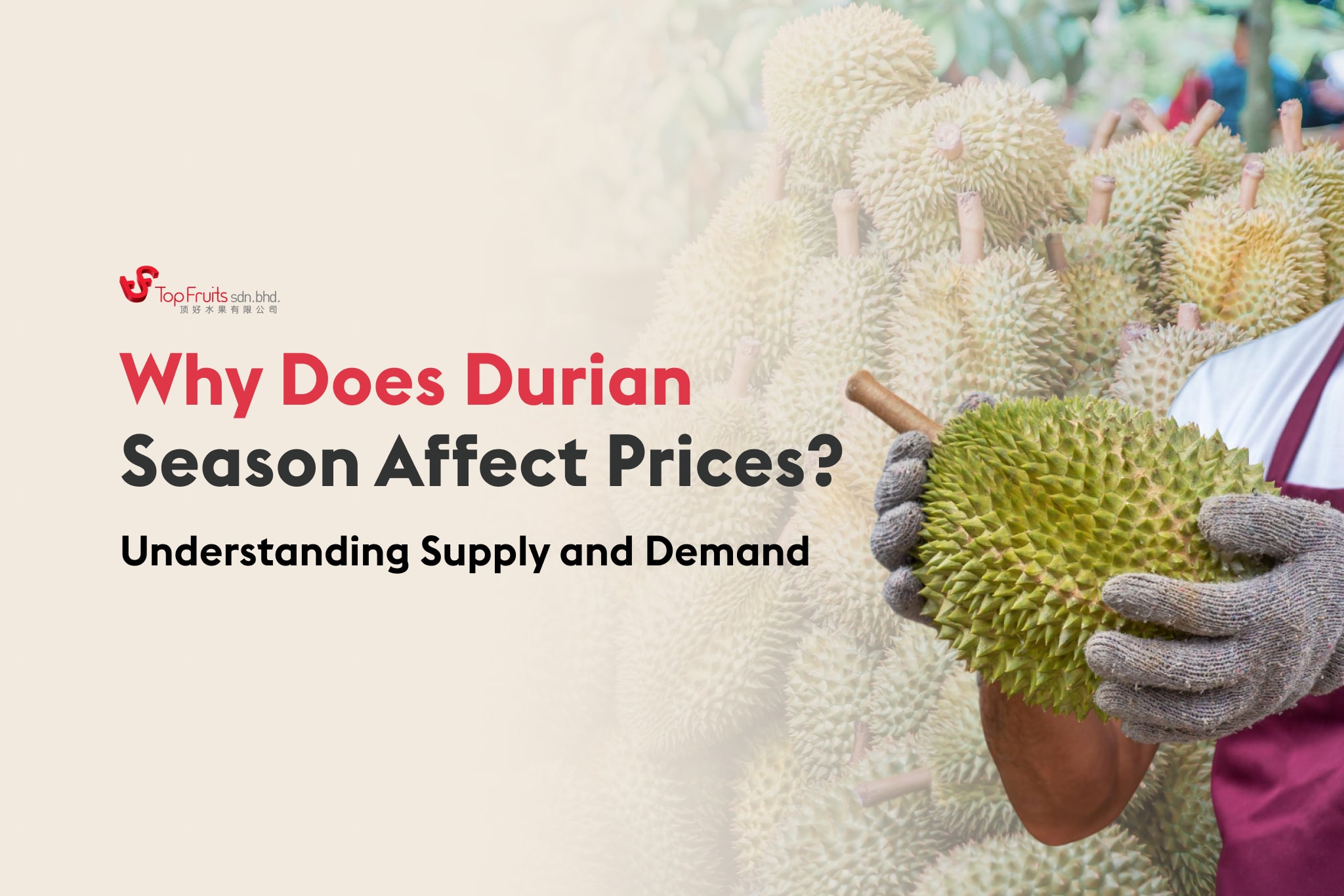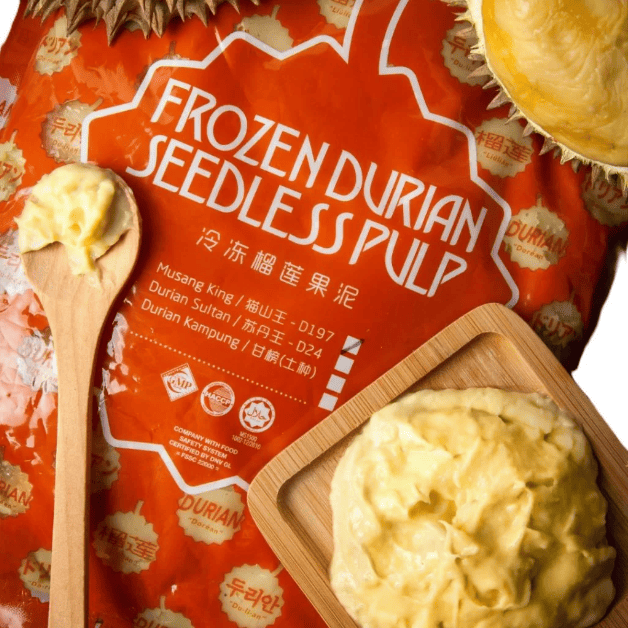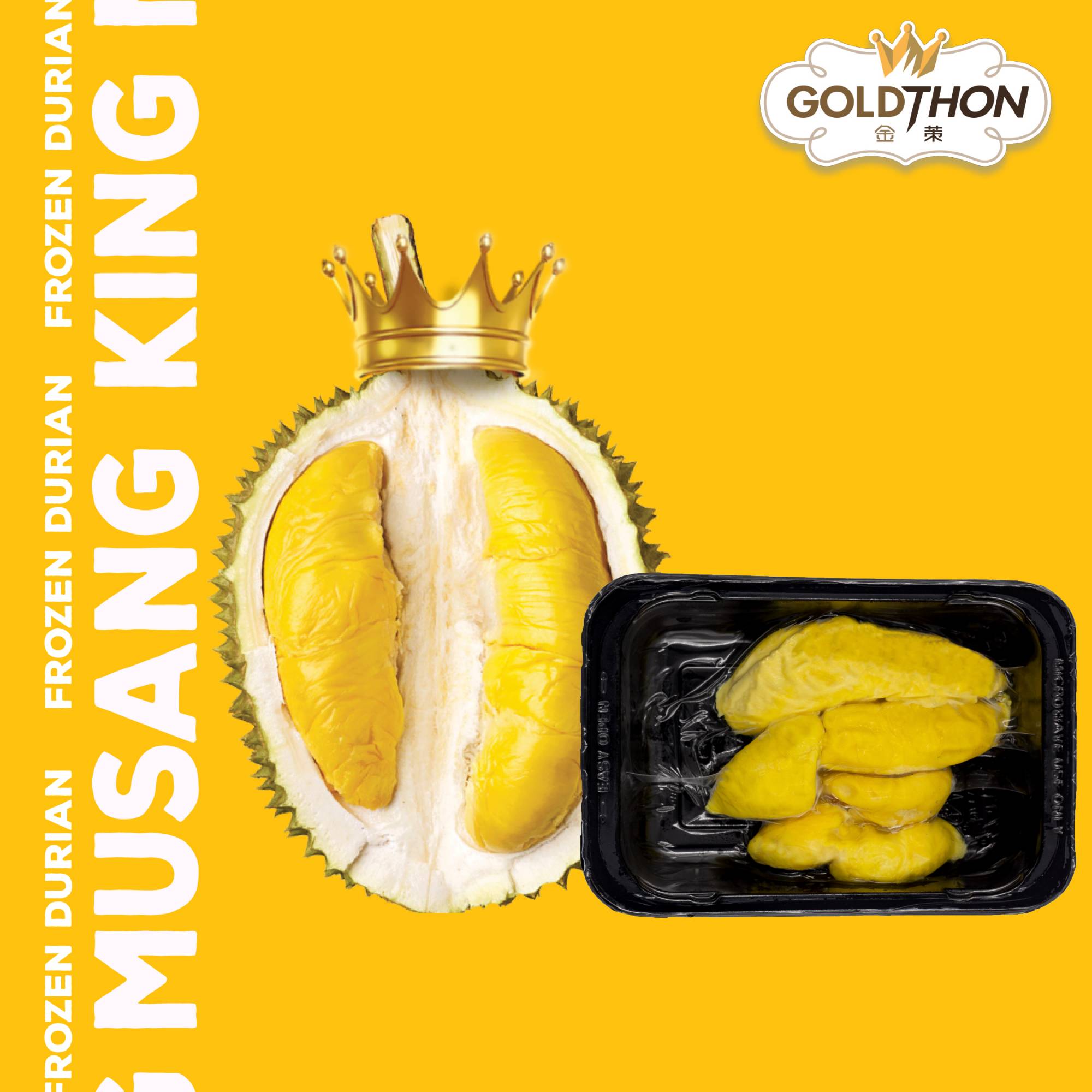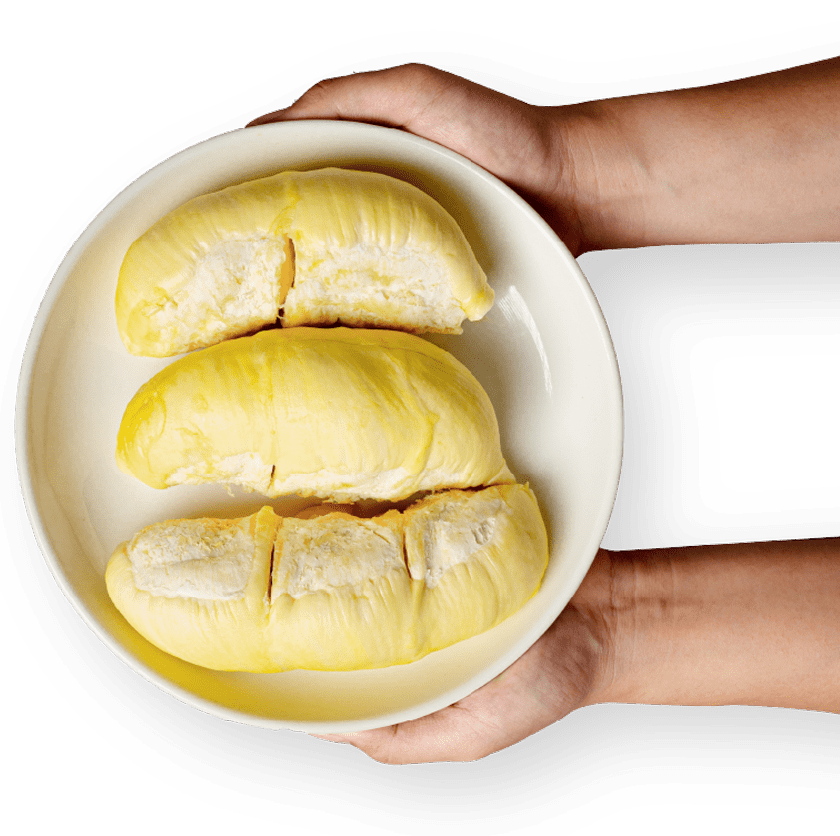28 Oct Why Does Durian Season Affect Prices? Understanding Supply and Demand

Why Does Durian Season Affect Prices? Understanding Supply and Demand
By Top Fruits Team | October 31, 2025
The durian holds a far weightier title than just the “King of Fruits” in Malaysia; it is a powerful cultural touchstone and a significant economic driver.
This thorny, polarizing delicacy commands attention—and major commerce. For businesses aiming to capitalize on this intense market, casual knowledge won’t cut it.
Success requires an almost surgical understanding of the durian’s notoriously volatile seasonality and the rapid, complex dynamics governing supply and demand.
The Golden Timing: A Business Guide to Malaysia’s Durian Season, Pricing, and Smart Procurement
The durian—dubbed the “King of Fruits”—is more than just a delicacy in Malaysia; it’s a cultural phenomenon and a significant economic driver. For businesses, mastering the durian market requires precise knowledge of its volatile seasonality and the dynamics of supply and demand.
This guide provides the essential insights you need to navigate the durian trade, from predicting the harvest to making informed, profitable procurement decisions.
1. When is the Durian Season in Malaysia?
The durian season is notoriously unpredictable, governed by nature and regional microclimates. However, Malaysia typically experiences two main harvesting windows: a Main Season and a smaller, less reliable Secondary Season.
Malaysia’s Durian Season Timetable
| Season Type | Peak Characteristics & Availability | Key Regions & Cultivars |
|---|---|---|
| Main Season | Peak Months: May/June – August. Yield: High-to-Very High. Widest variety and availability. | Regions: Johor, Raub (Pahang), Penang |
| Secondary Season | Peak Months: October/November – February. Yield: Low-to-Medium. Smaller harvest, highly weather-dependent. | Regions: Johor, Raub (Pahang), Penang |
Why the Calendar Isn’t Fixed: Regional Differences
The timing of the harvest is not a nationwide fixed date. It flows across the country based on local climate patterns, allowing for a near-continuous supply chain if businesses are willing to source regionally:
- Penang & Northern Regions often start their main season earliest (May or June).
- Pahang and Johor (Central and Southern Peninsular Malaysia) may peak slightly later, with Pahang’s major harvest (especially Musang King) often hitting its peak in July or August.
- East Malaysia (Sabah or Sarawak) often has an earlier main season or a distinct mini-season later in the year.
This regional stagger is crucial for businesses aiming for a longer purchasing window.
2. What Factors Impact Durian Harvesting?
The durian flowering and fruiting process is delicate. Several environmental and human factors interact to determine the quantity, quality, and precise timing of the harvest.
Climate & Weather Patterns (The Dominant Factor)
The single biggest driver is the weather. Durian trees require a specific cycle of conditions to flower and fruit successfully:
- The Dry Spell is Essential: A one-to-two-month dry spell is necessary to stress the tree and trigger flower initiation.
- Rainfall During Flowering: Excessive rain during the flowering stage can wash away pollen or cause the flowers to drop, leading to a much smaller yield.
- Irregular Weather Patterns: Climate change is causing more erratic weather. For example, some regions in 2024 experienced “three waves” of fruiting instead of the usual one main flush, extending the season but complicating harvest logistics. Hot, dry weather during ripening can intensify the durian’s flavor and aroma.
Tree Age & Cultivar Differences
Different durian varieties have different biological rhythms:
- Tree Maturity: Mature trees (over 10 years old) generally produce more consistent and higher-quality yields than younger trees, though this can vary by cultivar.
- Cultivar Cycle: Varieties such as Musang King (MSW) and D24 have distinct flowering and fruiting cycles, which helps spread the overall harvest across the main season.
Farm Management Practices
The level of care provided by orchard owner directly impacts both yield and fruit quality:
- Fertilization and Soil Quality: Proper nutrient balance, soil pH, and drainage are critical. Poor drainage can lead to root rot, while excessively dry or nutrient-poor soil results in smaller or lower-quality fruit.
- Pest and Disease Control: Effective management of pests and fungal diseases is crucial to ensure healthy fruit development and quality.
- Pollination Success: Durian trees are primarily pollinated by bats and insects. Maintaining a healthy surrounding ecosystem supports better pollination and a higher fruit set.
3. Supply and Demand: How They Shape Durian Pricing
Durian pricing is a masterclass in market volatility, driven by limited supply interacting with intense, growing global demand.
The Dynamics of Supply and Price
The price per kilogram (Pd) is inversely related to the supply volume (Qs). This is most visible at two extreme points:
- Peak Harvest (Glut): During the few weeks of the main season peak, a surge in Qs causes the prices curve to fall sharply. This is when retailers and local consumers benefit from the lowest prices. Farms and suppliers must move large volumes quickly to prevent spoilage.
- Off-Season (Scarcity): When Qs is minimal, especially from February to April, the price curve soars. The high fixed costs of importing (even from regional neighbors) or storing frozen pulp are passed to the consumer, making fresh durian a seasonal luxury.
Global Demand Drivers: The Export Effect
The pricing of premium durians, particularly Musang King, is primarily dictated by export demand, not just local supply.
- The China Factor: Demand from China and other key markets such as Singapore and Hong Kong remains exceptionally strong. A significant portion of Malaysia’s premium harvest is pre-booked, processed, and exported as whole frozen fruit or pulp, effectively reducing the available domestic supply.
- Value-Added Products: The global popularity of durian-flavored products—from mochi and ice cream to industrial durian paste (a key product like Top Fruit’s offerings)—creates a steady, year-round industrial demand for pulp. This industrial demand acts as a price floor, preventing prices from collapsing entirely even during a peak-season glut.

- Speculation and Logistics: Factors like logistics costs (refrigerated transport), import tariffs, and the role of large middlemen who may “hoard” supply can create artificial scarcity and further inflate prices, especially for the most desired cultivars.
4. Smart Procurement Strategies for Businesses
For businesses—including food manufacturers, exporters, and retailers—a strategic procurement plan is essential for cost management and year-round availability.
Strategy 1: Bulk Purchasing During Peak Season
This is the most direct way to reduce cost per kilogram.
| Advantage | Caution / Risk |
|---|---|
| Lower Cost: Secure a lower negotiated price due to high supply. | Spoilage Risk: High risk of spoilage if not processed or stored immediately. |
| Quality Control: Easier to cherry-pick the best quality and volume for grading. | Storage Planning: Requires significant, immediate cold storage capacity and logistical planning. |
| Cash Flow: Potential for a higher upfront cash outlay. | Market Glut: Prices might drop even further after your purchase if the glut is bigger than expected. |
Strategy 2: Embracing Frozen Durians & Cold Chain Management
To ensure a stable supply, businesses must look beyond fresh fruit. Cryogenic-frozen whole durian and nitrogen-frozen whole durian are the key to managing off-season costs and guaranteeing year-round stock.
- Frozen Options: Frozen whole durian or more efficiently, pre-packed frozen durian pulp using blast freezing technology.

- Advantages:
- Stable Year-Round Supply: Eliminates dependency on seasonal fluctuations.
- Quality Retention: Cryogenic freezing (≥ 80°C) or nitrogen freezing (-100°C) is utilized to freeze the whole durian, effectively preserving the freshness and durian properties up to 18 months.
- Stable Year-Round Supply: Eliminates dependency on seasonal fluctuations.
- Cold-Chain Logistics:
- Non-Negotiable: Requires strict adherence to cold-chain logistics (≤−18°C) from farm processing to final delivery to prevent spoilage and freezer burn.
- Cost Modeling: Factoring in the cost of frozen storage and refrigerated transport is necessary, but this is often outweighed by the stability of supply and lower overall unit cost compared to buying fresh off-season.
Strategy 3: Forward Contracts & Supplier Partnerships
Develop strong relationships with reliable, certified farms:
- Shared Risk: Forward contracts involve pre-booking a specific volume and price with a supplier ahead of the season. This stabilizes the farm’s revenue and guarantees your supply, sharing the risk of extreme price drops or surges.
- Quality Assurance: Partner with certified suppliers such as those with MyGAP certification for good agricultural practices and HACCP/GMP standards for processing to ensure high-quality, traceable stock.
Smart Durian Procurement Decision Checklist
Securing a consistent and profitable supply of durian requires moving beyond simple purchasing.
This checklist is designed for businesses to adopt a strategic sourcing approach that leverages seasonal market volatility, prioritizes quality, and ensures year-round product availability, ultimately maximizing cost efficiency and minimizing risk.
| Steps | Actions | Yes/No |
|---|---|---|
| 1. Forecast Demand | Have you projected your durian needs for the next 6-12 months? |
|
| 2. Timing the Purchase | Is your bulk fresh purchase planned for the peak harvest (July/August) to maximize savings? |
|
| 3. Cold Storage Readiness | Do you have immediate, sufficient storage capacity for bulk peak-season purchases? |
|
| 4. Off-Season Strategy | Have you secured a supply of high-quality frozen durian pulp for year-round production? |
|
| 5. Supplier Vetting | Does your supplier hold quality and food safety certifications (e.g., MyGAP, HACCP, GMP)? |
|
| 6. Cost Comparison | Have you modelled the cost of Fresh (Peak) vs. Fresh (Off-Season) vs. Frozen Pulp to determine the most cost-effective hybrid sourcing model? |
|
Choose Top Fruits for Reliable Durian Sourcing
When your business demands consistent quality and supply, partner with a trusted name in the industry. Top Fruits offers an integrated solution to your durian procurement challenges:
- Certified Quality: Our durian farms are MyGAP-certified, ensuring responsible and sustainable agricultural practices.
- Food Safety: Processing facilities adhere to stringent HACCP & GMP standards, guaranteeing the highest level of food safety and quality control.
- Year-Round Availability: We leverage state-of-the-art cryogenic freezing and nitrogen freezing technology to preserve the true flavor and texture of premium whole durians, providing a stable, high-quality supply for your products all year round.
Schedule a consultation with Top Fruits today to explore how we can support your business!
FAQ
Which regions start their durian season first?
The initial harvest of the main durian season typically emerges in the Northern regions of Peninsular Malaysia, with Penang and the surrounding areas of Kedah often seeing the first wave. This early start usually begins in May or early June. From there, the season follows a general pattern, moving progressively southward and central, with major harvests in states like Perak, Pahang, and Johor peaking slightly later.
When is the best time for businesses to buy durian in bulk?
The most strategic time for businesses to purchase fresh durian in bulk is during the absolute peak of the main harvest, which usually falls between mid-July and late August. This narrow window offers maximum advantage because the high volume of supply across multiple states drives the most competitive pricing and ensures access to the widest selection of premium varieties, such as Musang King. Buying then allows you to maximize cost savings and secure stock before prices rebound.
How can businesses store durian pulp safely for the long term while preserving quality?
For long-term preservation that maintains the durian pulp’s signature texture and flavor, the safest and most effective method is blast freezing technology. The freshly processed durian pulp should be rapidly frozen at extremely low temperatures (−18°C to −35°C). After this rapid freezing process, the pulp must be transferred to a commercial cold storage unit and kept at a stable temperature of ≤−18°C. This professional-grade approach effectively halts microbial activity and crystallization, allowing the pulp to be stored with minimal loss of quality for up to 18 months.
Are frozen durians as good as fresh ones?
High-quality, commercially frozen durian pulp, particularly that processed using blast freezing technology, is considered by many to be nearly indistinguishable from fresh, tree-dropped durians. The process locks in the flavor and texture, making it excellent for desserts, processing, and off-season consumption.
Why does the durian season change every year?
The season is highly susceptible to weather variability. A slight change in the timing or intensity of the dry spell and subsequent rainfall—especially during the critical flowering stage—can delay, accelerate, or reduce the harvest, causing the peak season to shift by weeks or even a month from one year to the next.

